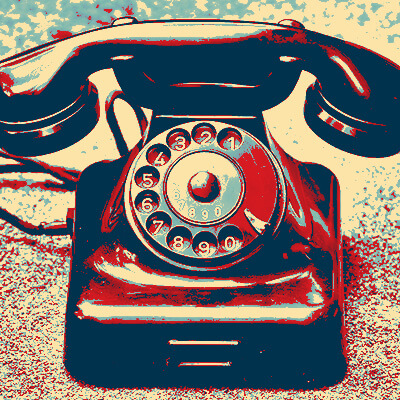I have been very pleased with the IT trainers from GroovyTek who have been to my house. They were very helpful!
Need Help? Call Us.
877.201.3586
From Dial-Up to 5G: Data Speeds Faster Than Light

Your Next Big Upgrade: The Speed of 5G
What if we lived in a world where you could travel to the moon faster than you could tie your shoes? If you’re over fifty-five, you probably remember what it truly took for a man to reach the moon. Armstrong’s televised first steps were an awe-inspiring experience for millions on earth. Our galaxy reshaped itself, suddenly more immediate and infinite than it ever was before. As the crowning moment of the 1960s, anything seemed possible.
However, the build-up to that successful moon landing was lengthy and agonizing. Studded with knotty technical challenges, the death of a few astronauts, and years of visionary experimentation, the moon landing was a long-term endeavor. Once the astronauts of Apollo 11 took off, though, it only took three days to reach the moon. It used to take three months to cross the Atlantic Ocean.
Our society has been transformed by speed. Each decade, we spend less and less time on activities that previously consumed minutes, days, or months. When was the last time you took a transatlantic flight? Flying from across the Atlantic Ocean, from New York City to Dublin, takes just under seven hours. However, that wasn’t always the case. Scholars and historians estimate that over 4.5 million Irish came to the United States during a one-hundred-year period. During most of that time, it took three months to travel from Dublin to New York City. Due to starvation and political turmoil in Ireland, leaving wasn’t a choice as much as a necessity. With that reality forced upon them, many Irish immigrants never saw their families again. Now, you can fly to Ireland and back in a single day, with time to spare.
What about traveling across the country? It takes five-and-half hours to fly from Los Angeles to New York City on a nonstop flight. However, traveling that distance with a combination of traveling on foot and wagons pulled by oxen, it would take around six months to travel that distance.
However, speed doesn’t only apply to travel. What about speed and technology? It doesn’t take long at all to load a web page with a good Internet connection. Searching something on the Internet yields millions of results in seconds. However, you might remember how long it took to search for something on dial-up Internet. If you were operating on dial-up today, it could take between two and five minutes to load popular sites like Amazon, CNN, or Target. Online shopping as we know it today would be an exercise in frustration.
to make sure everyone’s ready to go with their technology.
Dial-up Internet didn’t just popularize web browsing and make it user-friendly. It also transformed how the Internet was used. Streaming services like Netflix simply wouldn’t exist on dial-up. It would be impossible. Without online streaming, we’d still be tied to limited options at video rental stores.
What about Download Speeds?
Many apps are structured around the ability to rewatch content later, when it’s more convenient or when you’re without a WiFi connection. At the maximum speed of dial-up, it would take almost 9 days to download a two-hour movie. Of course, if the connection cut out or you reached a downloading cutoff, you’d have to start all over. By contrast, high-speed Internet connections could download that same movie in about a half-hour.
To put our speed-time achievements in perspective, it used to take 6-7 months to travel from New York City to Los Angeles. The distance from New York City to Los Angeles is 2,789 miles. The distance from Earth to Pluto, at their closest point, is 2.66 billion miles apart. Scientists have sent an unmanned spacecraft that has covered that distance in nine-and-a-half years.
When it comes to sending data from that unmanned spacecraft to Earth, it’s time-consuming. It takes 4.5 hours to send photos from the spacecraft’s location near Pluto, to scientists on Earth. For all the information to be sent back to earth, it took sixteen months total. In an age of instant downloads, this is a major delay.
Since 1983, the technology industry has been rapidly accelerating when it comes to data. Even 1G, a painfully slow analog-based network generation, was better than initial information-sending methods. Moving from 1G to a currently veiled network generation, 5G, was a long process. The improvements between each generation were astronomical. Remember the question at the beginning of the article: what if you could travel to the moon in less time than it takes to tie your shoes? If you could travel at the speed of 5G, it would be possible.
How fast Will 5g be? How fast is 5g Compared to 4g?
Traveling to the moon is almost too easy. Visiting the center of our solar system, the sun, is more challenging. At 92.96 million miles away, it’s impossible to visit the sun in real life because of extreme temperatures. However, at such a wild distance, it makes for easy comparison. If you remember 2G, it was the first digital cellular system. However, the next step up—3G—would make it feasible to reach the sun if you could travel at 3G’s speed. You could reach the sun in just two hours!
However, if you own an up-to-date phone, it operates on a 4G network. Traveling at that speed would take 56 minutes to reach the sun. You can send vast amounts of information through your cell phone at this speed. If you experienced other network generations, 4G itself is amazing. When it comes to the newest network generation, 5G, it will make your current phone look like a dinosaur in comparison. If you could travel to the sun at the speed of 5G, it would take 56 seconds. Covering 92.96 million miles in under a minute is the most astounding leap in data speeds yet.
The Anticipated Speed of 5G
The anticipated speed of 5G is part of the reason that new phone models don’t seem as exciting anymore. If you miss the anticipation of Apple’s newest models—and are disappointed by mediocre updates, such as improved battery life—5G is what you’re looking for. Many companies that create personal technology devices are holding off on releasing new innovations. This is because if they create an amazing new model now, it will be obsolete as soon as 5G comes out. If you’re in the market for a new phone and can afford to hold off, it’s best to wait for 5G to arrive. Since man landed on the moon, our ability to travel through our solar system and send information has changed astronomically. When 5G arrives, it’ll revolutionize our ability to communicate like never before.
Sources
Byrd, D. (January, 2019). Ultima Thule Seen in Detail. EarthSky. Retrieved October, 2019 from: https://earthsky.org/space/new-horizons-encounter-ultima-thule-jan-1-2019
Chuang, F. (October, 2019.) Spacecraft. Planetary Science Institute. Retrieved October, 2019 from: https://www.psi.edu/epo/faq/spacecraft.html
Drake, N. (July, 2015.) Your Top 10 Questions About the Pluto Flyby Answered. National Geographic. Retrieved October, 2019 from: https://www.nationalgeographic.com/news/2015/07/150713-pluto-flyby-ten-questions-answered-space/#close
NASA. (October, 2019.) Solar System Exploration. Planets. Retrieved October, 2019 from: https://solarsystem.nasa.gov/planets/overview/
Plug Things In. (n.d.) Dial Up Versus High-Speed Internet. Retrieved October, 2019 from http://www.plugthingsin.com/internet/connection/dialup-vs-high-speed-internet/
Download our PDF, which includes a network generations timeline, a word search, and a crossword puzzle!
Client Reviews
Today was my first experience with GroovyTek and it was extraordinary. I learned so much over the course of the hour AND as importantly fixed the problem I was having. The trainer was intelligent and friendly. All support was given in a very collaborative way. I am looking forward to this partnership.
Barb S
We have had several help sessions with a GroovyTek trainer. WE could not be more pleased. My trainer takes all our questions and while answering types up his answers so even after he leaves, we can refer to his notes. I would recommend GroovyTek to any of my friends or family without hesitation. BTW, ALL the employees at this firm are extrememly knowledgeable and friendly.
Tom D
I had a serious issue with my bank website not being secure. This was a very technical problem. I used the Remote Session option to get help. My GroovyTek trainer kept at it until we finally resolved the issue.
Jeff W
A wonderful service in every aspect from calling in to set up an appointment with GroovyTek and follow ups as well as the fabulous help, patience and expertise of the tech who came to the house to work with me with my computer issues. I would highly recommend GrooveyTek for all your computer needs! Thanks so much!
Jean G
Very impressed with my trainer’s ability to provide thorough explanations and demonstrations. I have confidence now in knowing how to manage my photos, videos, and documents. I received my money’s worth of valuable instruction.
Cheryl M
Outstanding trainers with expertise and a lot of patience at a fair price. I have used them for two years and they have given me a much better understanding of the in's and outs of how to use many aspects of my computer. It is a pleasure to have them come to my home and work on my own computer problems.
Jerry P
My tech is patiently bringing me (at age 79) into the computer age. I am so glad that I found him through GroovyTek. What a wonderful gift!
Judy K
The trainers are so friendly, and helpful. They certainly have lots of patience and knowledge. They make you feel so comfortable asking questions you would not dare ask your family to show you again how to do. They are always welcome in my home, sometimes I hate to see them go!
Debera F
I was so pleased to find GroovyTek. Although I am pretty tech savvy in some areas there are others where I need help. GroovyTek has helped me fill in that gap of information. I made an appointment to help me sync my devices and also help me learn how to organize my photos. The trainer was knowledgeable and able to explain things very clearly.
Natalie W
My tech from GoovyTek has been terrific. He is patient, knowledgeable, and explains things really well. I enjoyed learning new tools and features on my smart phone and computer. They have made doing things a lot easier and more enjoyable.
Jennifer H
GroovyTek did a great job! My trainer was on time, professional and she solved my slow computer. Great job, GroovyTek! I will use your services again.
Marcia F
I'm very pleased with my session today with GroovyTek. My trainer was able to fix both my computer and my printer (problems with both) and instructed me on how to correct the issues if they occurred in the future. We also made plans for my next session. I find GroovyTek sessions extremely helpful and convenient since they are in my home.
Eva S
Spectacular people. Knowledgeable, professional, customer focused and easy to work with. I have used their services a couple of times (because I am over 40) and they are great to work with.
Jim H
Dear GroovyTek team, I thank you from the bottom of my heart for this very supportive and beneficial service you provide! I am so grateful!









